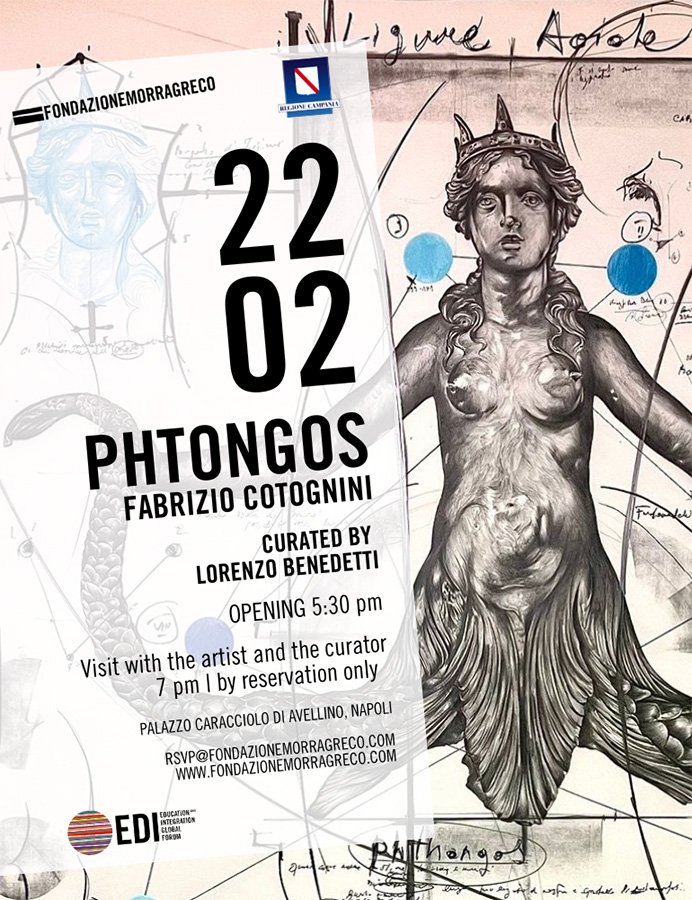Fabrizio Cotognini. Phtongos – Fondazione Morra Greco, Napoli
22.02.2024 – 30.03.2024
Opening: Thursday, February 22nd, 2024 at 5.30PM
Fondazione Morra Greco, Palazzo Caracciolo d’Avellino, Naples
During the opening night, the artist and the curator will lead a visit to the exhibition (in Italian) at 7PM – reservation is required
Phtongos is the title of Fabrizio Cotognini’s solo exhibition, curated by Lorenzo Benedetti, unfolding in the spaces on Fondazione Morra Greco’s third floor. For the occasion, the artist conceived a new body of works starting from a study of the heraldry, symbols, and iconographies of Palazzo Caracciolo d’Avellino.
The exhibition’s title refers at once to the voices of humans, monsters, and the song of sirens. Phtongos and Ligure aoide are the two expressions used by Homer to describe the voice of the sirens, mythical figures dear to the Neapolitan and Campanian imagination. The fil rouge of the exhibition is precisely the recovery, reconstruction and representation of various anthropomorphic beings belonging to the iconography of the Sirens of the local area, starting with the ancient cult of the Siren Partenope protecting the city.
Already a Latin inscription attributed to Epicurus – “Dum Vesuvii Syren Incendia Mulcet” – refers to this mythological being by summarising the alchemical relationship between water and fire (male-female): the “Siren sweetens the ardour of Vesuvius”, a reference to the rebellions of the Neapolitan people who rose up flaming like the volcano Vesuvius.
Through his works, Fabrizio Cotognini develops a direct dialogue with some of the artistic findings uncovered during the restoration of Palazzo Caracciolo d’Avellino and leads us on a journey through human-animal, plant-animal, and plant-human metamorphoses, generating reflection on current issues such as politics, sociology and ecology.
Large drawings and tiny sculptures take over the space of Fondazione Morra Greco, giving visitors the direct possibility of a visual, but also magical, dialogue with symbolic beings that often attract our curiosity for their beauty and oddity but are hardly read for the characters they hold in terms of symbology and narrative. Keepers of ancient but also current histories, so we embark on a journey into what Agamben calls “contemporary archaeology”: where current knowledge finds its foundations in anthropology, local culture and social context.




